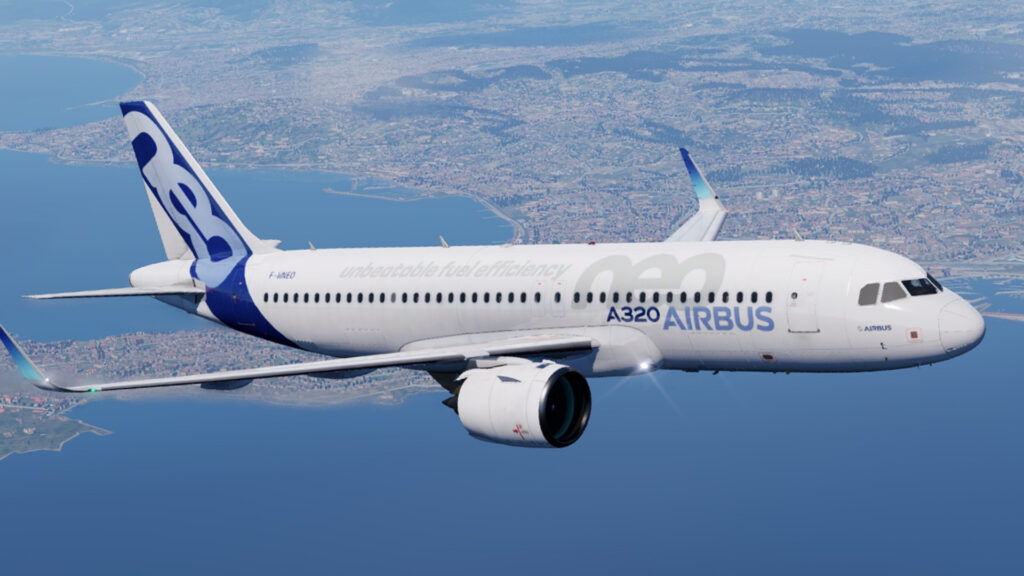Business
IndiGo’s mammoth aircraft deal: What it means for the airline and India’s aviation sector
Published
10 months agoon

IndiGo, India’s largest airline by market share, made global aviation history by placing a world record order of 500 A320 family narrow-body aircraft with Airbus at Paris Air show 2023.
This historic deal is pegged at $50 billion at list prices, and the airline will take delivery of these new aircraft between 2030 and 2035. Nevertheless, due to the airline’s extensive scale and impeccable credentials, IndiGo would have likely received a substantial discount. The current order comprises a mix of A320neo, A321neo, and A321XLR aircraft.
The historic purchase agreement was signed by Rahul Bhatia (Promoter & Managing Director of IndiGo), Venkataramani Sumantran (Chairman and Non-Executive Independent Director of IndiGo), Pieter Elbers (CEO of IndiGo), Guillaume Faury (Airbus CEO), and Christian Scherer (Airbus Chief Commercial Officer and Head of International), at the Paris Air Show 2023.
“It is difficult to overstate the significance of IndiGo’s new historic order for 500 Airbus A320 Family aircraft. An order book now of almost 1,000 aircraft well into the next decade enables IndiGo to fulfil its mission to continue to boost economic growth, social cohesion, and mobility in India,” Pieter Elbers, CEO of IndiGo, said.
IndiGo Order – The Fine Print

Indigo has placed an order for 500 A320neo family aircraft, which will be delivered between 2030 and 2035 and the airline has ample time to take a call on the exact mix of aircraft it would want based on its network and capacity requirements.
“We still have plenty of time to optimise what’s going to be the precise mixture of 320 and 321s and possibly extra-large (A321XLRs). We have all this flexibility as part of this order,” Elbers said.
The flagship range of single-aisle planes manufactured by Airbus is known as the A320 aircraft family. IndiGo primarily operates A320 family aircraft, with only about 40 turboprop planes used for regional flights. While the A320neo planes are mainly used for domestic and short-haul flights to nearby countries, the A321 models, particularly the A321XLRs, are intended for longer international routes, including destinations in Europe.
IndiGo has ambitious plans to expand its international network in the future. According to Airbus, the A320neo has a range of 3,400 nautical miles, while the A321neo can fly up to 4,000 nautical miles. The A321XLR has an impressive range of 4,700 nautical miles, allowing for non-stop flights of up to 11 hours.
With a commanding 61 percent share of the domestic Indian market, this order will be critical to the airline’s long-term objective to reign tall over the Indian aviation market for the foreseeable future. The engine selection for this order will be done in due course and so will be the exact mix of A320 and A321 aircraft, as per an IndiGo statement.
With this new order, since its inception in 2006, IndiGo has ordered a massive total of 1,330 aircraft with Airbus. While a portion of these planes will replace older aircraft, IndiGo is poised to significantly expand its fleet in the next 12 years. The order eclipses Air India’s recent order for 470 aircraft, including 70 twin aisles, worth $70 billion in terms of number of planes.
Betting Big on Thriving Demand
IndiGo’s significant order showcases the airline’s confidence in India’s thriving aviation market, which has emerged as the world’s third-largest and is experiencing rapid growth. In May, domestic passenger traffic in India reached a record-breaking 1.32 crore flyers, surpassing even pre-pandemic levels. This highlights the immense potential and promising trajectory of India’s aviation industry.
“This order is…basically securing IndiGo for the next 10 years. And aviation probably more than any other business is a long-term business… (the order) is aligned with the vision of the Indian government to build India into an aviation powerhouse and develop global hubs. This will enable us for long-term planning and long-term building of our network,” the airline’s Chief Executive Officer Pieter Elbers told journalists shortly after inking the deal with Airbus.
Tata group airlines led by Air India also have a similar ambition, and the two airline groups — IndiGo and Tata Airlines — now have a cumulative market share of over 85 per cent and close to 1,500 aircraft on order between them.
Now consider this: India’s overall commercial aircraft fleet currently stands at around just 700 aircraft, which is smaller than the individual fleets of some of the larger global airlines, and less than half of the aircraft IndiGo and Air India have on order. Clearly, with growing demand, the potential for growth in the sector is immense.
However, on the contrary, one Indian airline, Go First, has initiated insolvency proceedings, and SpiceJet is currently dealing with its own challenges. While the demand for aviation in India is indeed thriving, it is widely recognized that the price-sensitive nature of the Indian market has made competition challenging, leading to financial struggles and even the closure of some airlines. In this landscape, IndiGo has managed to defy this trend and achieve consistent success.
The Future Game Plan
IndiGo has ambitious plans for both domestic and international expansion, aiming to increase its network and capacity. With its fleet of over 300 aircraft, the airline is operating well over 1,800 daily flights connecting 78 domestic destinations and the order demonstrates its determination to not only be a participant in the aviation market’s growth story but to emerge as a leading and dominant force within it.
With a goal to double its fleet size by the end of the decade, IndiGo has ordered 480 aircraft to support its growth plans by 2030. Some of these new planes will replace older ones, while others will contribute to expanding the overall fleet. Although specific projections for the airline’s fleet size in 2035 were not disclosed, the recent order of 500 aircraft indicates a strong commitment to future growth.
With Air India rebuilding itself under Tata ownership and the larger streamlining and consolidation among the four Tata airlines, IndiGo also needed to tweak its strategy and be more alive to the competition to continue dominating the Indian skies for years to come. IndiGo is clear that it wants to work with a long-term vision to expand the aviation powerhouse that it already is.
“We basically now have a planning horizon of over 10 years, which means all the discussions and all the planning we have to do in terms of crewing, in terms of facilities, in terms of designing the network, partnerships, and so on, we can really work on the long-term vision,” Elbers said.
You may like
-


Indian Government’s Crackdown on Social Media: A Threat to Free Speech
-


The Simpsons did it again! This time foreseeing Apple’s latest technological innovation – The Apple Vision Pro
-


Dilip Venkatraman was promoted to SVP and business head for Media and Entertainment at Tech Mahindra
-


Swati Bhattacharya steps down as FCB India CCO
-


Lodha Ventures onboards Mahesh Shah as President of Corporate Communications
-


Nippon India Mutual Fund names Kaiyomurz Daver as Chief Marketing Officer


